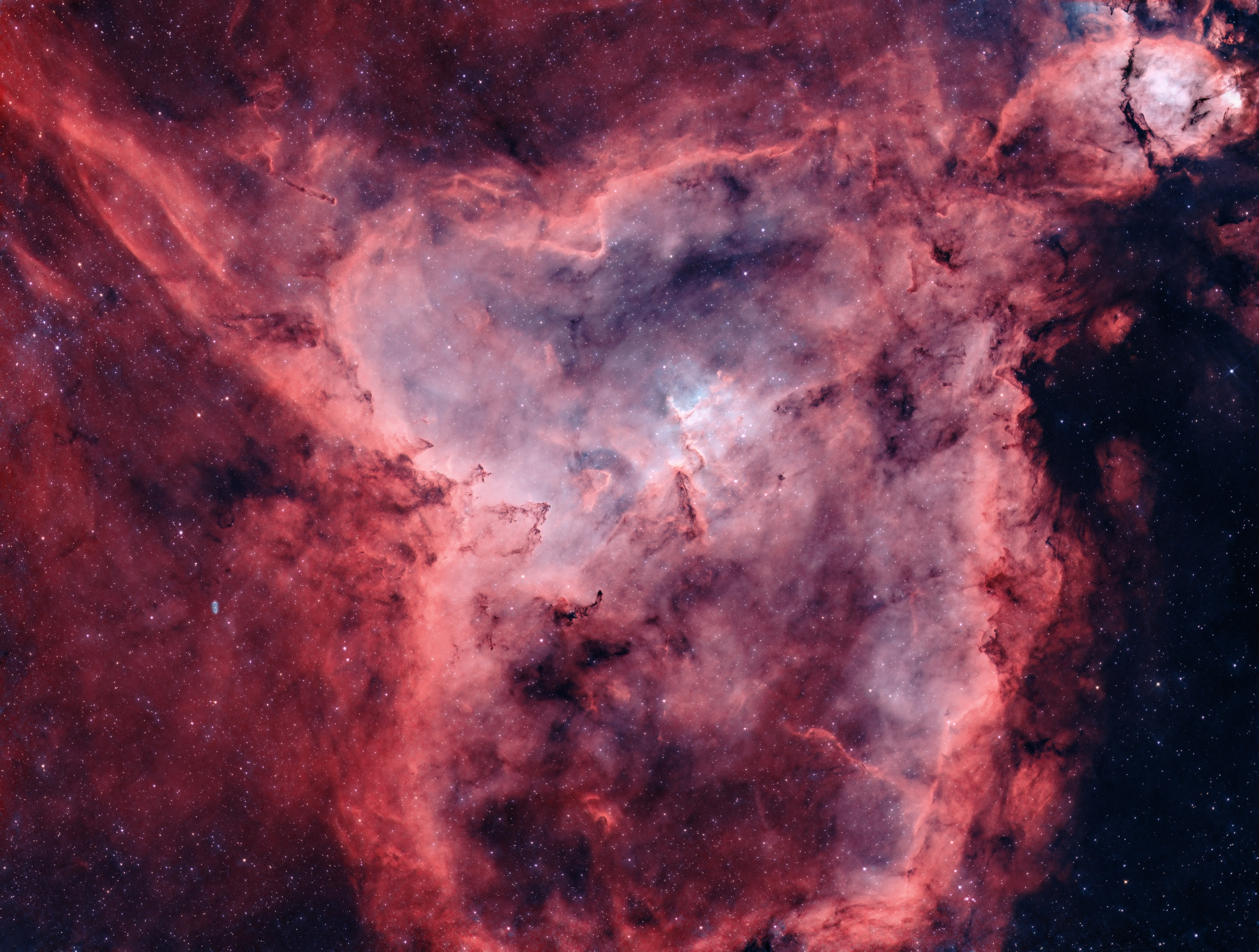
The Heart Nebula, also known as IC 1805, is an emission nebula located in the constellation Cassiopeia. This large complex of faint emission nebulosity is located in eastern Cassiopeia, five degrees north of the famous Double Cluster in Perseus.
It is named for its resemblance to a human heart, with a cleft in the middle. The nebula is composed of glowing gas and dust, illuminated by young, hot stars within it.IC 1805 is situated approximately 7,500 light-years away from Earth and spans about 200 light-years across. It is a region of active star formation, with many young stars still embedded within its clouds. The intense radiation and stellar winds from these young stars cause the surrounding gas to glow brightly.
The heart-shaped appearance of IC 1805 is primarily due to the presence of a large, central cavity, which has been carved out by the energetic radiation emitted by the hot, massive stars at its core. These stars are part of a young star cluster known as Melotte 15, which is nestled within the nebula. The cluster contains several O-type stars, the most massive and luminous type of stars in the universe, as well as numerous other young stellar objects.
The open cluster NGC 1027 is located near the left edge of the image. Below it and a little bit to the right you can find WeBo 1 (PN G135.6+01.0), a 14.5 mag Planetary Nebula which conists of a ring-like structure seen nearly edge-on around a central star which contains Barium, making it a chemically peculiar star.
100% enlargement of the center of IC 1805:

100% enlargement of the area around the Planetary Nebula PN G135.6+01.0 (WeBo 1):

 Cassiopeia (Wide Field), standard lens photograph.
Cassiopeia (Wide Field), standard lens photograph.
 IC 1805 - Heart Nebula in Hα, which is part of this image.
IC 1805 - Heart Nebula in Hα, which is part of this image.
Exposure Data